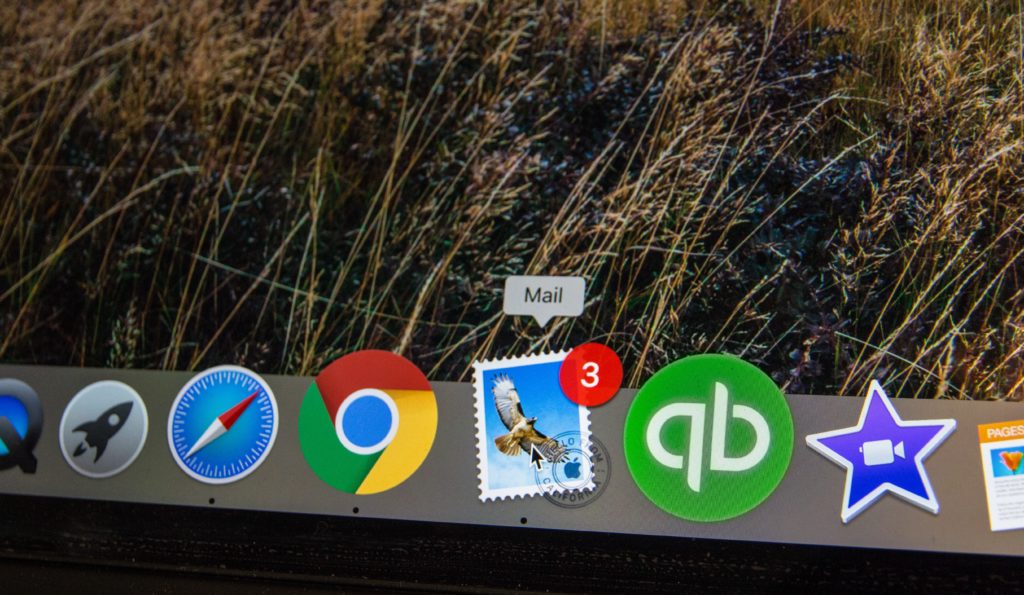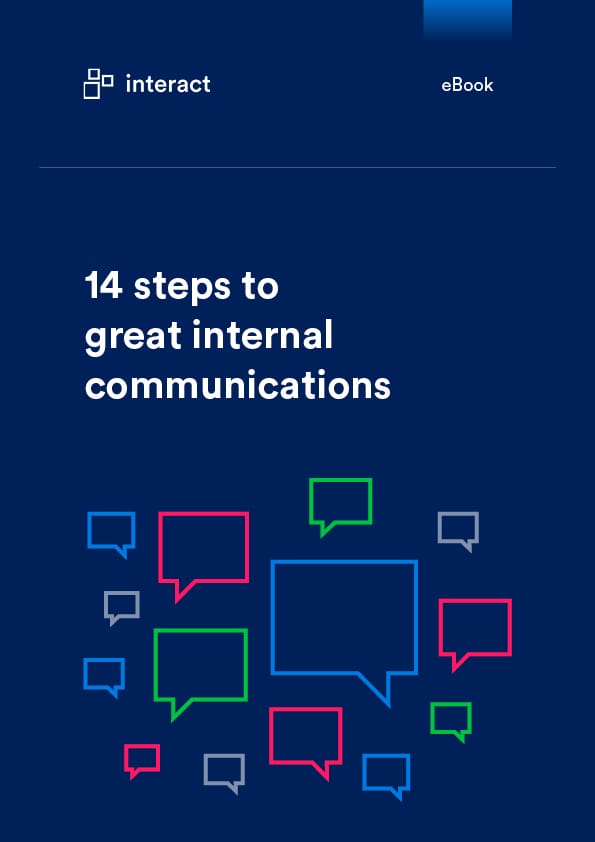Internal communications is meaningless without an attentive audience. So, how can you maximize the likelihood of delivering important messages to an engaged workforce everytime?
Creating content that gets read and engaged with is a challenge that the majority of internal comms experts are continuously trying to overcome.
When it comes to internal comms, every piece of content we send out is essential. However, with a dispersed workforce, it’s becoming more difficult to ensure your comms are read and acknowledged by the right people.
With this in mind, we’ve accumulated some internal communications tips to help you win the battle for attention and create comms messages that are not only read – but understood.
1. Make the title count

When it comes to messages at work, we’re all guilty of judging a book by its cover. That is, if it doesn’t immediately appear relevant – it gets dismissed. To grab the attention of your workforce in the middle of a busy day, your content needs to appear important, relevant, and interesting.
And, admittedly, there are some areas of internal comms that are a bit dreary. You’re unlikely to get your audience excited about changes to the office printer or arrival of tax paperwork. But you still need them to read your comms. So how do you entice them in?
In this scenario, the title is everything. You need to be able to convey the gist of the message in an engaging and attractive way. So, in the case of new tax paperwork, your comms could start with the title “Changes to employment tax forms.” However, the chances are that most of your audience will ignore this message on the grounds that it sounds a little, well, dull. If you position it so it appeals to the reader’s interest, ie: themselves, you might find your click-through rates increase. Something like, “Find out how much tax you’ve paid this year – more quickly and easily.” Or perhaps you’ve installed a brand-new printer to replace the not so reliable one you’ve had for years. Instead of “New printer details here”, you could lead with the benefit “Fed up of printer paper jams? We have good news!”.
2. Check the structure

While we’d like our audience to read every word of our comms, in reality, our employees just want to know the bare facts. Which is why you need to include the most essential information in the first paragraph. This is a technique used in journalism where the building up of the story’s factual elements are all found in the first two paragraphs.
Further on down, you can include extra details, such as the benefits or consequences of the subject you are discussing. The finishing paragraphs should act as a conclusion or summary, allowing the reader to follow links or attachments if they wish to find out more information.
This way, your reader gets all the information they need to know quickly. Any additional, but less essential, detail is included to read if they are inclined or have the time.
3. Avoid the waffle

Even when your message needs a bit of explaining, you should keep it as concise as possible. Your employees will be managing a number of tasks, so when their flow is interrupted by a piece of internal comms, a 1000+ word missive isn’t going to get them to read it. In actual fact, the longer the text, the less likely it will be read. People want bite-sized chunks of information.
Look back at your wall of text and see how you can edit out all the irrelevant points. People need to know the facts and be instructed as to what to do. Anything other than this, their attention will drift. If you do need to include further detail, include it on a link for anyone who wants to have a deeper understanding.
Another thing you can bear in mind is the format in which you use for your message. If it is a complex concept that you need to convey, is text really the best medium? Consider a slide show or a video – something that allows a complicated idea to be more digestible.
4. Avoid jargon

We may use technical jargon quite freely with our team members, but as communicators, it should be avoided in our messages to the workforce. Effective internal communications requires language that is easily understandable. If you’re issuing news, don’t immediately revert to acronyms, initialisms, and jargon – not everyone will understand the message.
Even terms widely used across various industries, like KPIs, BDRs, and ROI should be broken down to be understood by the whole audience. The best way to think about this is: how would you communicate the same message to a family member? Breaking down the lingo ensures that your message is not misunderstood or lost in translation.
5. Be human

People want to hear from humans, not robots. This means paying attention to the tone and phrasing of your comms. Providing a human element to your comms ensures relatability.
This doesn’t mean overloading on exclamation marks and emojis. It’s delivering your messages with simplicity, directness, and a degree of warmth.
For example, if your organization is going through a change, for example, redundancies, what tone would your internal comms take?
Bear in mind the mood of your workforce during times of change. They will be nervous, afraid, suspicious, angry, stressed. They need clear information on exactly is planned as quickly as possible – before any rumor mill starts up.
The partnership of internal comms and leadership is important in these situations. Rather than have a faceless comms message about something which could be life-changing for members of your organization, having the involvement of a leader to speak directly is a lot more effective – and appropriate.
Your message should also have the option to allow your users to leave comments. Having this feature, as well as a face to present your message is vital in change comms. Your audience then has a point of contact to direct any questions.
6. Don’t be scared to repeat your message

You’re not going to hit home with every single member of your audience. When you have some vital piece of information, there’s nothing wrong with repeating yourself. This could mean:
Scheduling your message to go out every week – leading up to the deadline, make sure you send out your message a number of times. But don’t make this a copy and paste job – instead work out new angles for your message – press upon the urgency, add new details, acknowledge those who have responded already.
Using different media – some messages should carry more weight than others, so if it’s an important piece of comms that requires response or action from your employees, invest time in getting it as widely distributed as possible. This could mean creating written comms on email, a video on the intranet, push notifications via employee cell phones, and written notices up in the office.
Getting cheerleaders on board – When you need a message to carry even extra oomph, enlist the support of key figures within your organization – preferably leaders, to circulate the news. These people have influence and will be able to promote your comms via their blog or a simple message on the intranet.
7. Review the design and accessibility of your comms

How does your comms look to the receiver? Is it easy to read or are people struggling to make sense of the message amid pop-ups and a mobile-unfriendly interface? The look of the finished product is so important to engagement, and it’s essential you get it right. This doesn’t mean enlisting the help of an expensive graphic designer. You just need to be able to provide a message that is clear and easy to read. You don’t need flashing graphics, funny gifs or stylish type font.
And this extends to accessibility. The presentation of your comms needs to be read by everyone, so bear in mind those who have sight loss, find some words difficult, whose first language isn’t English, or find using a keyboard difficult. So videos should have subtitles, font should have an enlarged text option, and the contrast between colours should be clear. You can read more about accessibility features here – and it’s important for everyone in your workforce that you implement these measures as quickly as you can.
According to the World Bank, 15% of the world’s population has a disability. That’s about a billion people, a number nearly equal to the population of China. While these disabilities might not be visible, there is a high chance that a percentage of your employees will rely on accessibility measures in your comms to help them.
8. Target your audience

When it comes to receiving comms, your audience does not want to receive news that isn’t relevant to them. News on car parking going to employees who take public transport? Notification on new office layout access going to staff working remotely? Memo on changes to bonus structure to people who don’t earn commission? It shouldn’t be up to your users to separate the wheat from the chaff. The more irrelevant messages they receive, the less they will take heed of all internal comms.
The best way to get around this is to use a feature like Personas. This allows you to form specific groups of people defined by a common characteristic, or criteria: first aiders, company vehicle owners, or information security officers, for example. This way, you can deliver impactful comms to a targeted audience and avoid blanket bombing the rest of your workforce with messages that don’t concern them.
It’s been oft-repeated in the past few months, but this year’s events have been life-changing. As a result, it’s more important than ever that your comms strike a chord with your people. In order to inspire, motivate and speak to your audience, you have to keep honing the methods of communicating to your workforce.
As Bill Gates said, “Like a human being, a company has to have an internal communication mechanism, a “nervous system”, to coordinate its actions.” This ‘nervous system’ communicates to all areas of the business, making sure everyone is informed on news that is relevant to them and their role. The quality and impact of your communications determine the health of the organization, reducing conflict, improving engagement, and building stronger, more resilient teams.
Using these internal comms tips can help you to continue the honing of your communications with your audience and further galvanize the relationship between you and your workforce.


